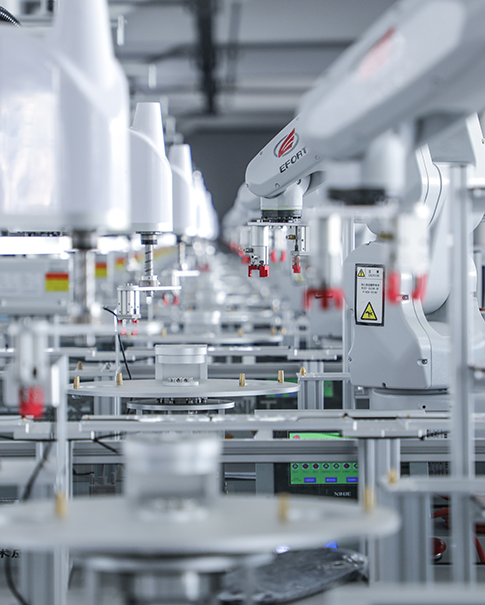The aerospace industry is no stranger to challenges, but recent events have tested its resilience in unprecedented ways. From the global COVID-19 pandemic to material shortages and a shortage of skilled labor, the aerospace supply chain has faced multiple hurdles over the past few years. According to industry reports, airlines lost an estimated $370 billion in revenue during the pandemic, while more than 87,000 jobs were lost across the aerospace sector. Many of these job losses were directly related to disruptions in the supply chain, with 55,000 positions impacted by supply chain issues alone. These challenges underline the urgent need for the aerospace sector to rethink its supply chain strategies and adopt innovative solutions to stay ahead of potential disruptions. Here’s how aerospace manufacturers can prepare for future challenges and drive efficiency in the coming years.
A key lesson learned from recent disruptions is the importance of visibility within the supply chain. Aerospace supply chains are complex, involving numerous suppliers, manufacturers, and maintenance providers spread across different regions. When one link in the chain faces an issue, it can lead to a cascade of problems, often resulting in delays or groundings of aircraft. To mitigate this, manufacturers need to invest in automation tools that can provide real-time data on the status of components and materials. By embedding smart sensors in key components and linking them to a shared network, manufacturers can track every part of the supply chain, from production to installation. This enables them to anticipate and respond to potential disruptions much faster, reducing the ripple effects across the entire network. Moreover, collaboration between manufacturers, suppliers, and original equipment manufacturers (OEMs) is crucial. Shared data, combined with visibility into each step of the process, can help prevent shortages and delays, ultimately leading to smoother operations and quicker response times.
Labor shortages have been one of the most significant hurdles in the aerospace industry in recent years. The pandemic has caused a global disruption in workforce availability, and the aerospace sector has felt the impact, with a lack of skilled workers leading to slower production and delivery timelines. To overcome this challenge, companies need to implement attractive compensation packages and employee retention programs. By offering incentives like safety net programs and benefits for returning workers, companies can help bring back experienced employees who might have left the workforce due to the pandemic or other reasons. Additionally, the aerospace industry needs to invest in mentoring programs to help train the next generation of workers. Providing scholarships or grants for students pursuing careers in engineering or aviation can also ensure that there is a steady pipeline of talent entering the industry, ready to take over as older employees retire.
Sustainability is becoming a central focus in many industries, and aerospace is no exception. In 2021, leading aerospace companies committed to achieving net-zero emissions by 2050. One of the major steps in this direction is the development of zero-emission commercial aircraft by 2035, spearheaded by companies like Airbus. However, the push for sustainability extends beyond just new aircraft designs—it also involves revamping how aerospace companies operate and manufacture their products. Manufacturers are increasingly focusing on Scope 1 and 2 emissions, which refer to the direct emissions from operations and the energy used in production. To meet sustainability goals, aerospace manufacturers must leverage cutting-edge technologies like digital twinning, additive manufacturing, and fast prototyping to reduce waste, improve energy efficiency, and minimize the environmental impact of production processes. By integrating green energy solutions and smart technologies into their supply chains, aerospace manufacturers can streamline operations while driving positive change throughout the industry. These innovations can significantly reduce the carbon footprint of both manufacturing and distribution, helping the aerospace sector contribute to global sustainability goals.
To overcome the ongoing challenges in aerospace supply chains, manufacturers must focus on staying ahead of the airplane—anticipating potential disruptions and developing strategies to address them before they become major issues. This proactive approach can help reduce the impact of unforeseen events, such as material shortages or labor disruptions, while also improving efficiency, reducing costs, and supporting sustainability goals. By enhancing supply chain visibility, addressing labor shortages through recruitment and retention strategies, and investing in sustainable practices, aerospace companies can build more resilient and agile supply chains. The key to success lies in anticipating future challenges and developing solutions that will allow the industry to thrive in an ever-changing environment.
The aerospace supply chain has faced significant disruptions in recent years, but with the right strategies and technologies in place, it can overcome these challenges and emerge stronger. By focusing on real-time visibility, skilled labor recruitment, and sustainability efforts, manufacturers can build a more resilient supply chain that is better equipped to handle the unexpected. As the industry moves toward a net-zero future and continues to embrace technological innovations, the aerospace sector can continue to soar—reliable, efficient, and sustainable for years to come.
 Network Supported
Network Supported